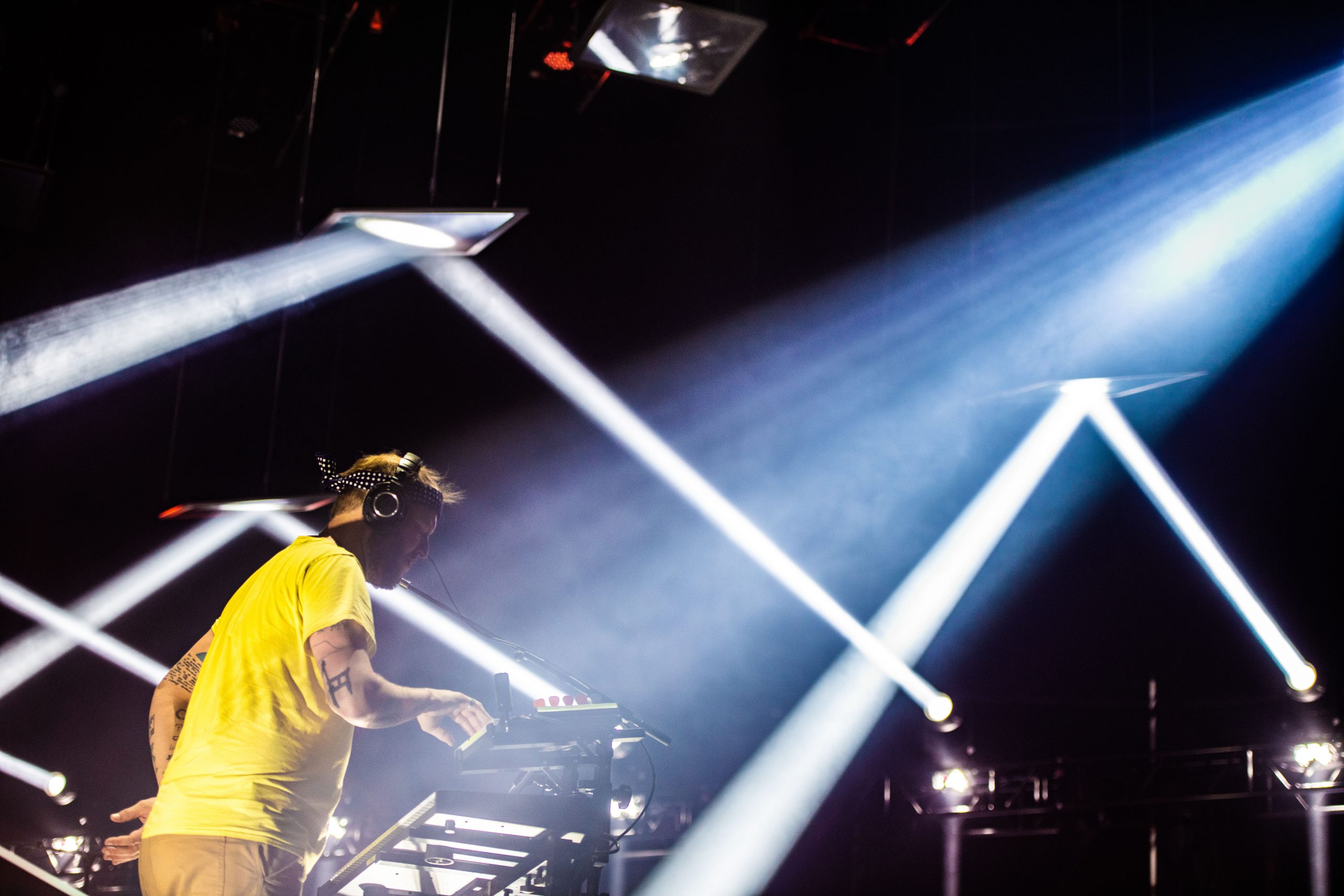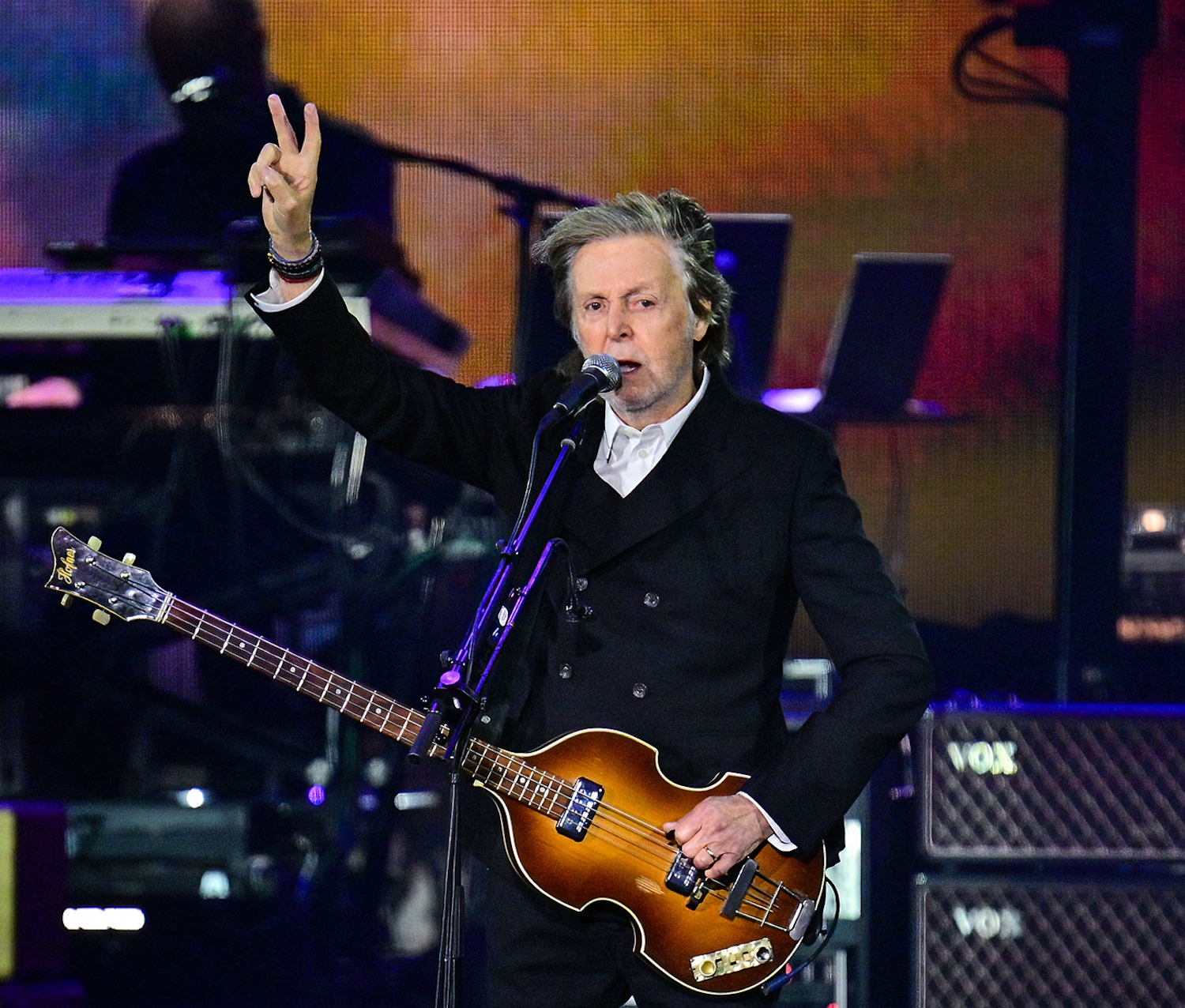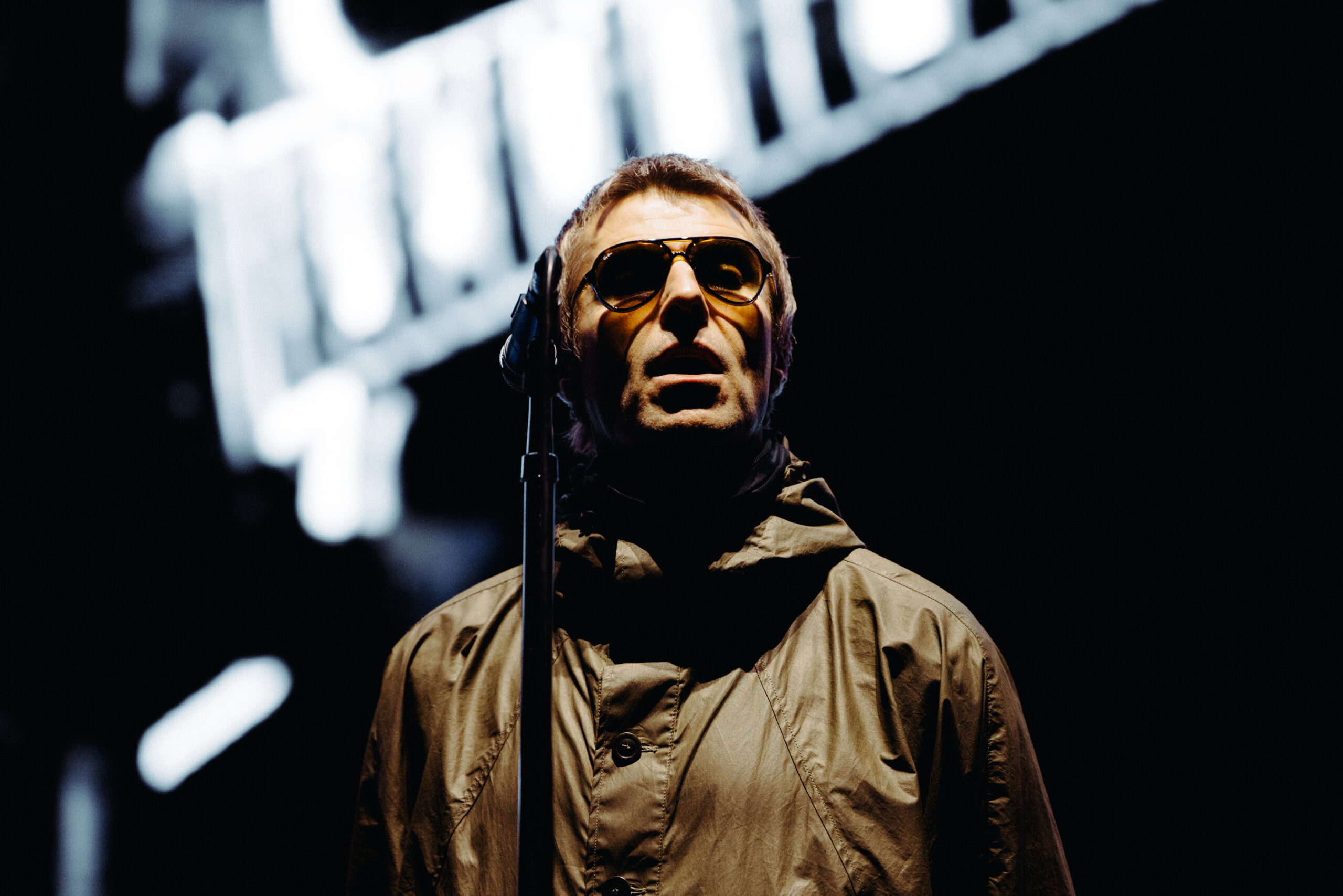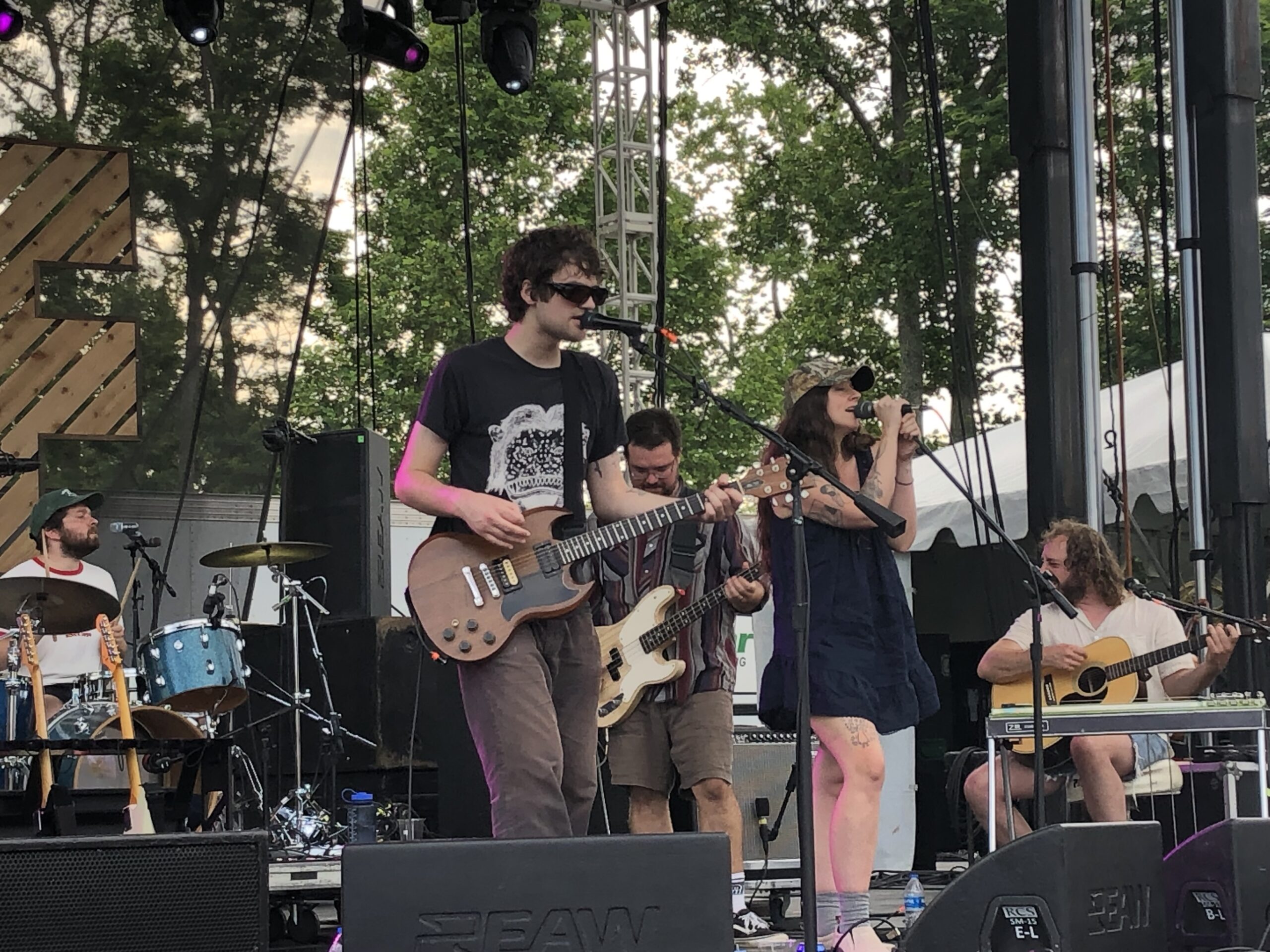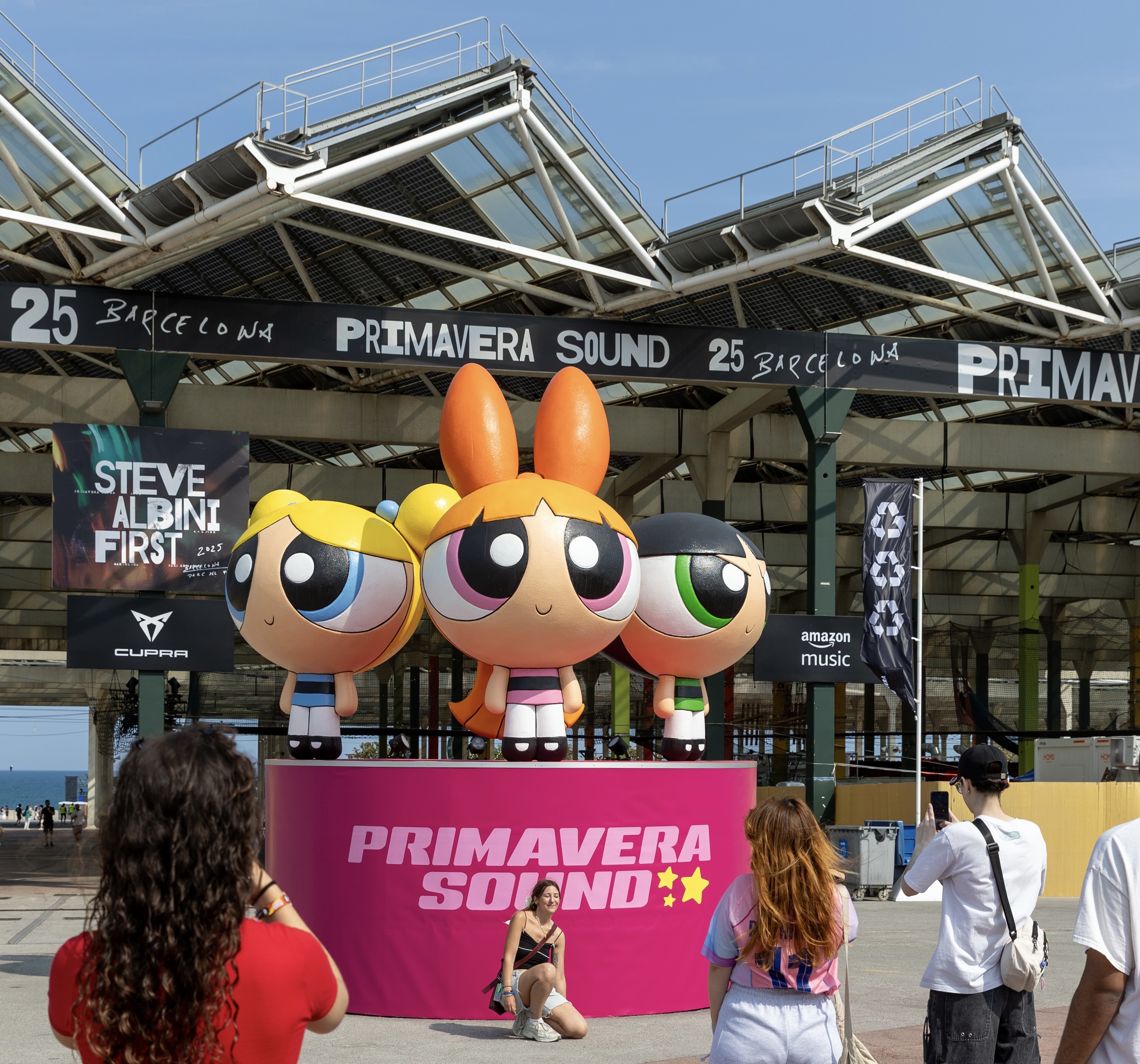About halfway through her opening set Tuesday, Leslie Feist requested a "people check" from the Schottenstein Center crowd shrouded in darkness before her. "Let's go full Bon Jovi volume," she instructed, before correcting herself: "Let's go full Bon Iver volume." The irony was thick, especially considering the soft, pretty music she immediately resumed performing.
In the early years of this century, Feist helped usher indie rock into its dinner-party era, developing an aesthetic something like alternative adult contemporary on the star-making run of albums Let It Die, The Reminder, and Metals. She returned from obscurity in 2017 with Pleasure, a raw and skeletal collection emphasizing the rambunctious rock 'n' roll spirit that has always lurked in her discography. That spirit manifested Tuesday in intermittent fits of guitar heroism, like her bluesy lead work atop "My Moon My Man" and the way she attacked her acoustic on "A Commotion." Pleasure itself was de-prioritized in the setlist, though, with only the relatively quiet "Get Not High, Get Not Low" and "A Man Is Not His Song" making the cut.
More than two years past that album, she now seems fully off-cycle. Her set in Columbus presented more of a career overview -- albeit one that pointedly left out the Apple-anointed "1234," her biggest hit by far. Back when that song was blowing up, it seemed like Feist herself might headline arenas one day. Instead she's spent the intervening decade leaning against that level of celebrity: burrowing into moody atmospherics on the autumnal Metals, taking a six-year break between albums, returning from that hiatus with a challenging and sometimes confounding left turn.
Feist's show was a reminder (ahem) of her catalog's ample crowd-pleasing potential, a flex demonstrating how much graceful beauty remains at her disposal. There were surprise flourishes, like her bandmates briefly erupting into a melodious Greek chorus of sorts. There were signature moves, like the descending staccato "ah-ah-ah-ahs" that often punctuate her vocal runs. Mostly there were richly conceived rock and pop songs textured with violin, flute, and saxophone. This subtle tour de force doubled as a glimpse of the road not taken. Had she chosen to leverage the success of "1234" rather than live a quiet life and create at her own pace, maybe these songs would have been the glue of a much larger production. On the other hand, maybe some of these songs would not exist at all, and maybe Feist's life would be a lot more needlessly stressful. In that sense the set was not just a summary of Feist's career but a microcosm, a humble triumph on her own terms.
If not for the groundwork laid by Feist and others, Bon Iver might not be headlining arenas right now either. Justin Vernon's band emerged in the immediate aftermath of Feist's "1234" success, at a moment when indie rock was getting cozier and more accessible with each passing year. After Feist and peers like Iron &For Emma, Forever Ago -- but he did so in ever more ostentatious fashion, his music growing bigger and more fractured along with his audience. Speaking of that audience: In terms of sheer numbers, it's also unclear whether Bon Iver actually should be headlining arenas right now. The entire upper bowl was curtained-off Tuesday, and the band's Philadelphia show this week was downgraded from the 20,000-capacity Wells Fargo Center to an arena half the size. But the word "ambitious" should only really be thrown around in the positive sense regarding this tour. If Vernon and friends aren't quite ready to pack out America's hockey sheds, they're abundantly prepared to deliver a spectacle worthy of that scale. Like the music itself, Bon Iver's live show has transformed gradually over the years, evolving into a genuinely unique experience. The latest iteration of that experience is just outrageously cool. Some people roll their eyes at the character Vernon has become, this bizarre combination of jammy guitar bro and over-the-top futurist -- the guy who takes off his headphones to announce, "We're here to just celebrate music and life and all that" before inquiring, "Is anyone on LSD this evening?" I find his persona endearing and in some ways inspiring, especially after seeing him take it to its logical extreme onstage. He may not kick it with Kanye anymore, but one thing he shares with Mr. West is a predilection for visionary arena shows.
Bon Iver's current live setup mirrors that electro-organic quality that has defined their last two albums. In terms of personal presentation, they looked like your average indie band. Out front Vernon stood scruffy in his sweatband and P.O.S T-shirt, surrounded by a bunch of his longtime bandmates plus Wye Oak's Jenn Wasner, a new addition to the Bon Iver road show. But above them hung an array of squares suspended in midair, flashing neon colors around their edges, moving together like a flock of migrating robot birds. The musicians were stationed at separate platforms, each one surrounded by glowing lightsaber bars in triangular shapes. It was like if the members of the Grateful Dead all had their own personal Daft Punk pyramids. Such juxtapositions dominated the concert. "Jelmore" sounded like a ballad by Vernon's beloved Bruce Hornsby (one living link between Bon Iver and the Dead) being deconstructed in real time. An extended jam near the end of the set blurred the line between smooth jazz and free jazz, as if Kenny G had suddenly morphed into John Zorn. Other times they were the hippie-era Jefferson Airplane and the Reagan-era Starship all at once. These songs represent the convergence of inspiration from many different angles, and thanks to the immersive 360-degree PA system they touted in a pre-tour mini-doc, the music really did seem to come from all directions. The show sounded even better than it looked. Sometimes the technology took a backseat to the humanity, as on Vernon's solo acoustic reading of "Re: Stacks" or the gospel-inflected "U (Man Like)," which found S. Carey counting off the intro and Wasner ably replacing Hornsby and Moses Sumney's guest vocals. Other times they wrung drama from the sound of tech threatening to swallow up humanity entirely, be it an extra-digital "Hey Ma" or Vernon beginning the encore with a looped, a cappella performance of "Woods." They lost me occasionally, in the swampy grooves of "We" and "666" or the Bon-Iver-by-numbers of soundtrack one-off "Heavenly Father." But the constantly shifting textures and dynamics ensured that when they cranked up the bombast, it hit hard. "Blood Bank" was an avalanche, "Perth" a thunderstorm. The set-closing "Naaem" suggested you don't need a proper chorus to write a proper anthem. [videoembed size="full_width" alignment="center"][/videoembed] Unsurprisingly, the focus was this year's i,i, an album that summarized and hybridized Bon Iver's recorded history to date. The communal joy and sighing hope that courses through that record finds full bloom in the thrill of onstage collaboration. Perhaps that's why they mostly ignored its angry predecessor 22, A Million. Or maybe, with all of i,i on the setlist, they had to create space somehow for early jams "Lump Sum" and "Creature Fear" and, of course, "Holocene." That one still stands as, if not the best Bon Iver song, the definitive expression of their ethos: a musical reflection of natural beauty so awe-inspiring you can only be humbled. "You just don't know when it's gonna be over," Vernon spouted off before Bon Iver's final song. He elaborated, "Not the show -- your life." The ensuing song, "RABi," dismisses the idea of eternity and encourages listeners to live in the moment, making the most of your limited time on Earth. Regardless of where you stand on philosophy and metaphysics, what Vernon and his crew are doing with their years together is breathtaking. [videoembed size="full_width" alignment="center"][/videoembed] SETLIST: "iMi" "We" "Holyfields" "666 ʇ" "Lump Sum" "Heavenly Father" "Jelmore" "Faith" "Blood Bank" "Marion" "U (Man Like)" "Perth" "33 'GOD'" "Hey, Ma" "Re: Stacks" "Holocene" "Salem" "Sh'Diah" "Naeem" ENCORE: "Woods" "Creature Fear" "RABi [photoembed id="2060956" size="full_width" alignment="center" text="" zoom="off"]View this post on InstagramAre you!!!!! Freakin!!!! Kidding me!!!!!!
A post shared by meghanmacmillan (@meghanmacmillan) on
